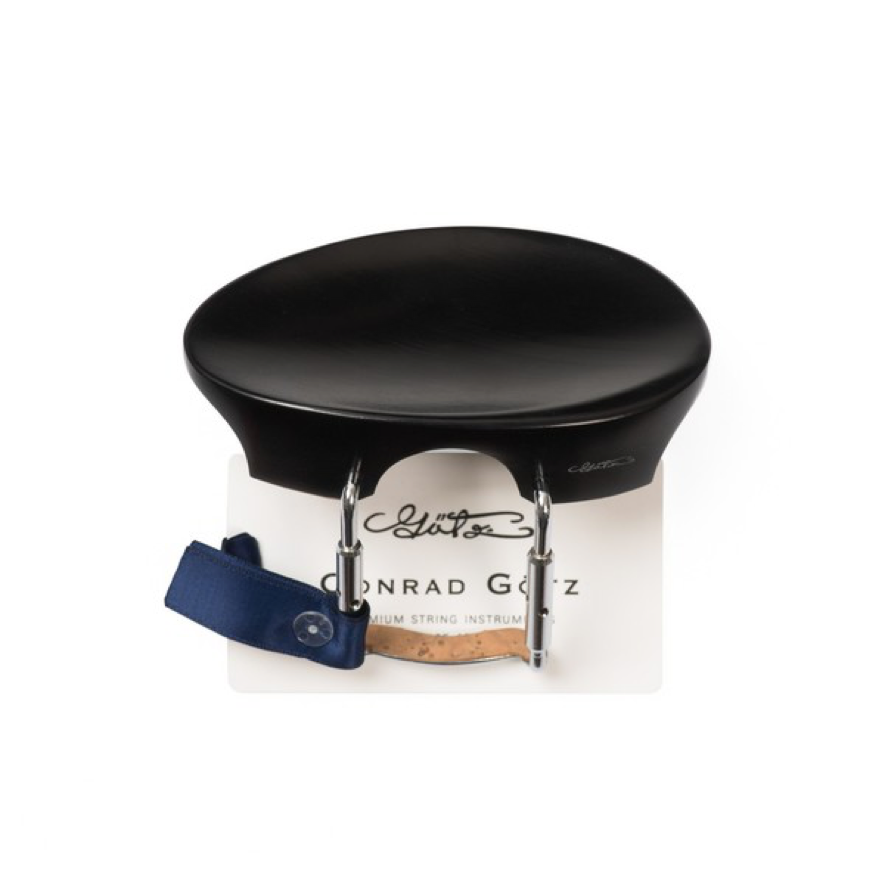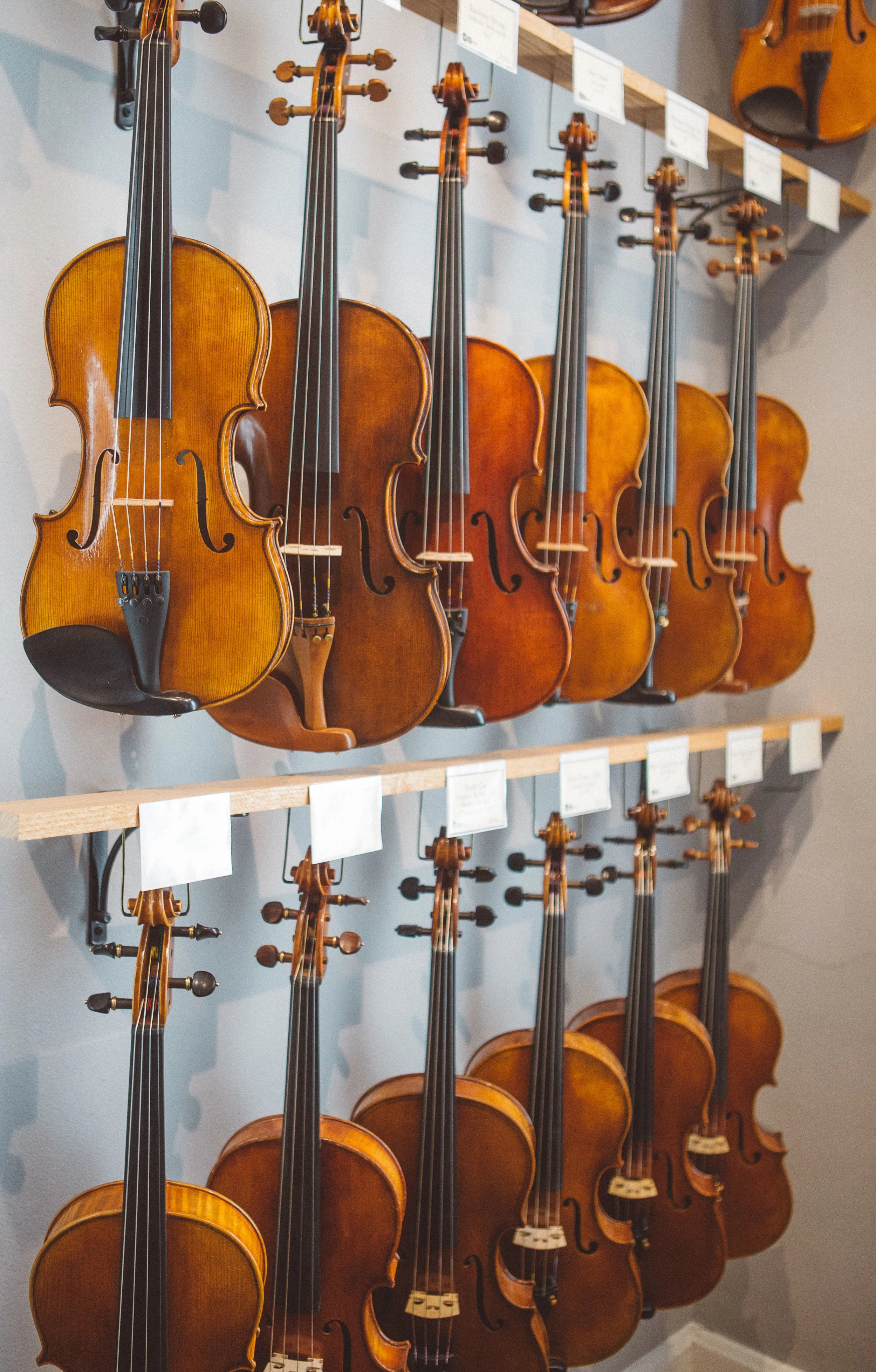BASIC ACCESSORIES WHEN YOU START PLAYING THE VIOLIN
If you’re a beginning violinist, there are a few essential accessories you’ll need to play and care for your instrument properly. As you progress, you may want to invest in higher quality accessories, but to get you started, here are some basic accessories you should consider purchasing:
➤ Violin case: just in case you bought your violin without a case, it’s worth mentioning that a case is essential to protect your violin when you’re not playing it. A basic foam or hard-shell case is a good idea to start with. There are many different shapes and prices of violin cases on the market. Here are some of the most common shapes and price ranges:
Rectangular: this is the most traditional and common shape of violin case. Prices range from around $30 for basic models to well over $1,000 for high-end and custom models.
Shaped: these cases are molded to the contours of the violin and come in a variety of shapes, such as arrow or crescent. Shaped cases range in price from about $30 to over $500.
Fiberglass: these cases are lightweight and offer excellent protection. Fiberglass cases range in price from about $100 to over $1,000.
Rectangular violin cases are recommended for beginners. These cases are usually made of wood or plastic and have a rectangular shape. They often have a hard outer shell and a padded interior that provides excellent protection for the violin. Rectangular cases also usually have several compartments for storing accessories such as bows, rosin, and extra strings.
➤ Music stand: a music stand is helpful for holding your music at a comfortable height while you’re playing. There are several types of music stands:
Traditional: these are the most common types of music stands, typically made of metal or wood and designed to hold sheet music at eye level. They are often adjustable in height and fold up for easy storage and transport.
Desktop: these are smaller versions of traditional music stands designed to sit on a desk or tabletop. They can be useful for practicing or small performances.
Floor: these are freestanding music stands that sit on the floor and can be useful for larger performances or rehearsals where several musicians are playing together.
I personally use the Wittner folding music stands, which are designed for portability and are lightweight and easy to carry. They can be adjusted to different heights and angles and often come with a carrying bag.
➤ Rosin: rosin is a substance made from tree resin that is applied to the hair of the bow to create friction on the strings. Without rosin, the bow will not produce sound. There are many different types of rosin available, but a basic light rosin should be sufficient for most beginners, costing around $10-$15. Here are some popular rosins for violin bows:
Pirastro Goldflex: this is a popular violin bow rosin that produces a warm and rich tone. It’s easy to apply and works well in a variety of climates.
Hill Dark: this is another rosin that produces a clear and focused tone. It’s ideal for playing in a large hall or orchestra and is suitable for a variety of playing styles.
Kaplan Premium: this is a high quality rosin for violin bows that produces a warm and clear tone. It is suitable for a variety of playing styles and works well in different climates.
When choosing a rosin, it’s important to consider your playing style, climate, string type, and personal preferences. It may be helpful to try different rosins to find the one that works best for you and your instrument.
➤ Shoulder rest: a shoulder rest helps support the violin and keep it in a comfortable position while you’re playing. There are many different types of shoulder rests, but a simple foam one is a good place to start, especially for children. Whether or not to use a shoulder rest is a matter of personal preference for each violinist. Some violinists prefer to play without a shoulder rest, while others find it helpful in maintaining proper posture and technique. If you do choose to use a shoulder rest, I recommend the ergonomic shoulder rests - These shoulder rests are designed to provide maximum comfort and support, especially for players with larger frames or those with back and neck problems. They are adjustable and can be customized to fit the player’s shoulder size and shape.
Adjustable: these are the most popular type of shoulder rest and typically have adjustable legs that can be moved up or down to adjust the height of the rest. Some popular brands include Kun, Everest, and Wolf Forte Primo.
Ergonomic: these shoulder rests are designed to conform to the shape of the player's shoulder, providing a more comfortable and secure fit. Examples include the Bon Musica and the Comford.
Foam: these shoulder rests are made of foam or sponge material and are often a more affordable option. They are lightweight and easy to adjust, but may not provide as much support as other types of shoulder rests. Some popular brands are Mach One and Playonair.
Wooden: these are typically made from hardwood and have a more traditional look and feel. They may not be as adjustable as other types of shoulder rests, but they can provide a warm, resonant tone. Some popular brands are Viva La Musica and Wolf Forte Secondo.
➤ Extra strings: over time, violin strings gradually lose their tone and resonance as they wear out, and they may become more difficult to play or produce a dull, flat sound. If you notice that your strings are becoming difficult to play or sound flat, it may be time to replace them. The average life of violin strings is between 6 months and 1 year. It’s always a good idea to have a spare set of strings on hand in case one breaks. Here are some recommended violin strings and their approximate prices:
Thomastik-Infeld Dominant: these are popular and widely used violin strings that offer a warm, rich tone and good projection.
Pirastro Evah Pirazzi: these are high-quality, premium violin strings that produce a bright and powerful sound. They offer excellent projection and clarity and are suitable for solo performances.
D’Addario Helicore: these are versatile violin strings that offer a warm, balanced tone and good projection. They are suitable for a variety of playing styles and are a popular choice among violinists.
Larsen Virtuoso: these are premium violin strings that offer a warm and complex sound. They have a fast response and excellent projection and are ideal for solo performances.
I personally use Dominant strings as they are the best value for money.
➤ Chinrest: different chinrests may work better for different playing styles, body types, and preferences, so it is important to try different options before making a decision. A chinrest that is too high or too low can cause discomfort and strain on the neck and shoulders. It is also important to choose a chinrest that fits your particular body type and playing style. There are several types of violin chinrests, each with its own unique design and purpose. Here are some common types of chinrests and why you might use them:
Guarneri: this is a popular style of chinrest that sits on the tailpiece side of the violin and has a relatively low profile. It provides a comfortable and secure resting place for the jaw and chin, allowing the player to maintain a stable and relaxed posture while playing.
Teka: this is a unique style of chinrest that is shaped like a small cup and sits on the tailpiece side of the violin. It is designed to provide a comfortable and secure resting place for the chin and jaw, while allowing the player to maintain a more natural and relaxed posture.
Flesch: named for its inventor, Carl Flesch, this style of chinrest is designed to provide maximum comfort and support for the chin and jaw. It has a curved shape that follows the natural contours of the face and is often preferred by players who have difficulty finding a comfortable position with other types of chinrests.
Central: this type of chinrest sits directly over the tailpiece of the violin and is designed to provide maximum stability and balance. It is often preferred by players who play with a more upright posture or who need extra support for the chin and jaw.
The central chinrest is especially recommended for children and players who don’t have long arms. A central chinrest is a type of chinrest for violinists that is designed to sit in the middle of the tailpiece and provide a more central and balanced playing position. The best material is ebony, which is a dense, hard and durable wood that is resistant to wear and tear, making it an ideal choice for parts that come into frequent contact with the player’s skin.
➤ Tuner: an electronic tuner or tuning app on your smartphone can be very helpful in accurately tuning your violin. These are just a few examples of free tuning apps available for download:
Tuner Lite by Piascore: this iOS and Adroid app is a simple and easy-to-use tuner that can be used to tune your violin. It also includes a metronome and a pitch pipe for reference.
Simply Tuner: this app is available for both iOS and Android devices and is designed for violinists. It has a large display that’s easy to read and can quickly identify pitches.
On the other hand, electronic tuners have a digital display that shows the pitch of each string and can be used in noisy environments or in situations where precision tuning is required. These is the one that I use:
Korg Tuners: one of the most popular electronic tuners for violins is the Korg CA-2, which is a compact chromatic tuner that can be used for a wide range of instruments. It has a clear, easy-to-read display and can be calibrated to different tuning standards. The CA-2 also features a built-in microphone and a piezo sensor, allowing for accurate tuning even in noisy environments.
➤ Cleaning cloth: a soft microfiber cleaning cloth is essential for keeping your violin clean and free of rosin dust. When choosing a cloth to clean your violin, it is important to avoid rough or abrasive materials that could damage the finish or scratch the surface. It is also a good idea to use a separate cloth for each cleaning task, such as one for dusting and another for polishing, to avoid cross-contamination. Also, be sure to use a clean cloth each time you clean your violin to avoid spreading dirt or debris. I recommend the Thomann Polishing Cloth and the MusicNomad String Instrument Premium Microfiber Polishing Cloth.
➤ Pegs: the pegs are responsible for adjusting the tension of the strings, which is critical for producing the correct pitch. Over time, the pegs can become sticky and difficult to turn, which can make tuning the instrument a frustrating and time-consuming process. Peg paste, which is a blend of natural waxes and other ingredients, is applied to the pegs to help reduce friction and make them easier to turn. This makes tuning the violin faster and more efficient, and also helps to ensure that the pegs hold their position and do not slip during playing. Using peg paste is also important for preventing damage to the instrument. If the pegs are difficult to turn, there is a risk of applying too much force and causing the pegs to slip or the strings to break. I can provide you with information about the different types of peg paste commonly used by violinists.
Hill peg paste: this is one of the most popular types of peg paste used by violinists. It is made of a unique blend of waxes and has a relatively low melting point, making it easy to apply.
Pirastro peg compound: this is another popular brand of peg paste that is widely used by violinists. It is made of a blend of natural waxes and other ingredients that help to keep the pegs from slipping.
Thomastik-Infeld peg compound: this is a newer type of peg paste that has gained popularity in recent years. It is made of a blend of natural waxes and other ingredients that help to keep the pegs from slipping and provide smooth tuning.
Bernardel peg paste: this is another popular brand of peg paste that is known for its high quality. It is made of a blend of natural waxes and other ingredients that help to keep the pegs from slipping.
How to apply peg compound correctly
When applying peg compound, you need to follow a few simple steps.
Remove the peg you want to lubricate from the violin's peg box. Use a clean cloth to remove any dirt or residue from the peg’s surface.
Take a small amount of peg compound and apply it to the peg’s surface, focusing on the part that comes into contact with the peg box.
Slowly and gently turn the peg back and forth to distribute the compound evenly. Avoid applying too much force or turning the peg too fast, as it can cause damage or break the string.
Wipe off any excess compound with a clean cloth, and reinsert the peg back into the peg box.
Remember to avoid applying peg compound on the violin’s tailpiece or other wooden surfaces, as it may cause damage.
Violin mutes
Violin mutes are accessories that are placed on the bridge of a violin to dampen or mute the sound produced by the instrument. They are used for a variety of reasons, including the following:
➤ To reduce the volume of the violin, making it quieter and more suitable for practice or performance in a smaller setting.
➤ To create a muted, softer tone quality that can be used for expressive purposes in certain musical passages.
➤ To change the timbre or color of the sound produced by the violin, adding variety and nuance to a performance.
There are several types of mutes commonly used by violinists, including the following:
➤ Rubber: these are the most common type of mute and are often included with beginning violin sets. They are made of rubber and are placed on the bridge to muffle the sound of the strings.
➤ Tourte: these are made of rubber or plastic and are shaped like a small wedge. They are placed on the bridge and can be moved up or down to adjust the amount of muting effect.
➤ Practice: designed specifically for use during practice sessions, these mutes are made of metal or rubber. They are often heavier than other types of mutes and provide a more significant reduction in volume.
➤ Heavy: these are made of metal and are much heavier than other types of mutes. They are typically used for orchestral performances where a muted sound is required.
➤ Wooden: these are made of wood and are often used in baroque and early music performances to produce a softer, more muted sound.
The type of mute used depends on the performance or practice situation and the desired sound quality. It is important to note that prolonged use of mutes can affect the sound and playability of the instrument, so it is recommended to use them only when necessary.
My recommendation is a lightweight mute for your violin, the Gewa Tourte Mute is a good option, and if you need other lightweight options for a muffled sound try the Gewa Violin Practice Mute.
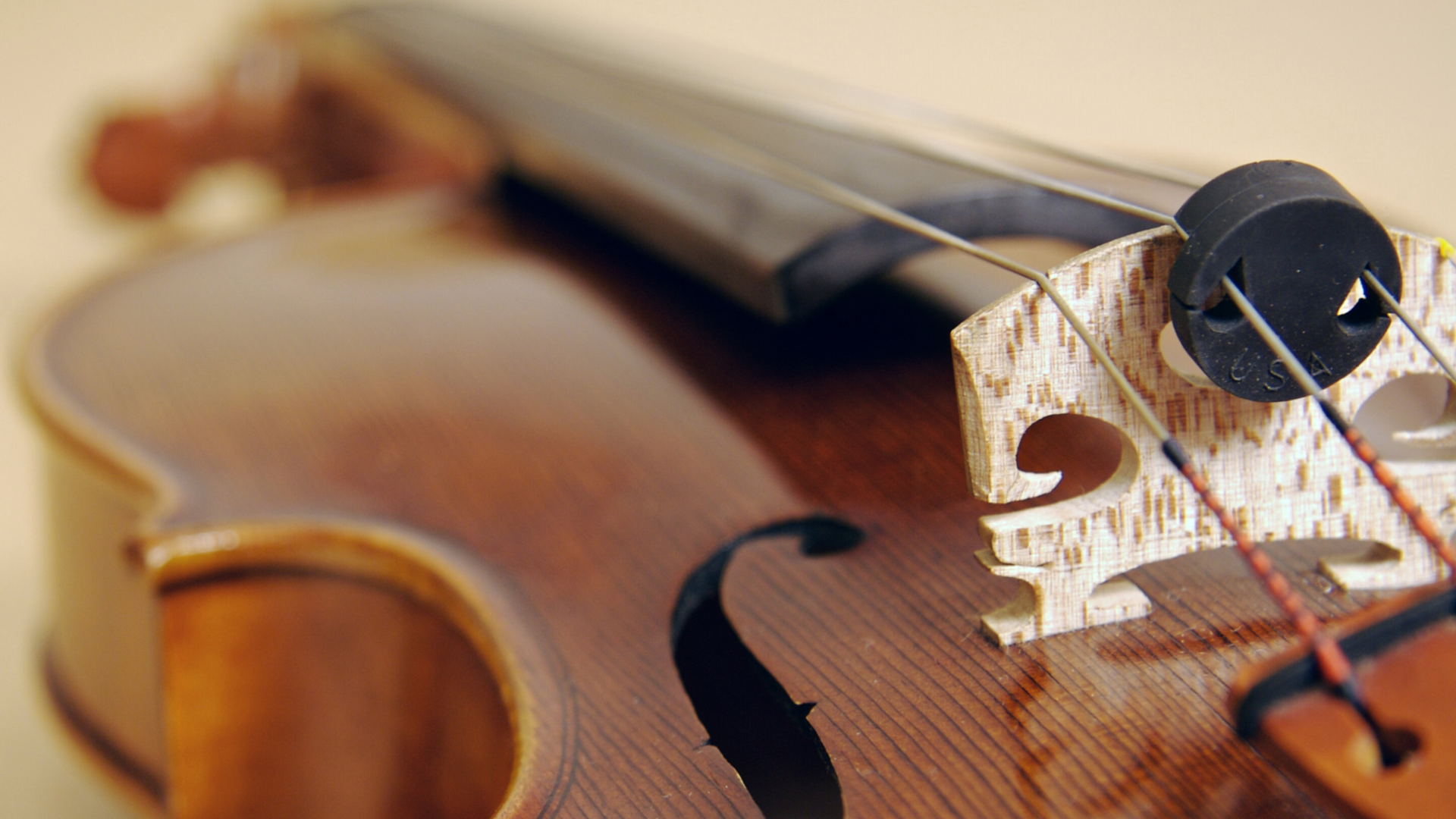

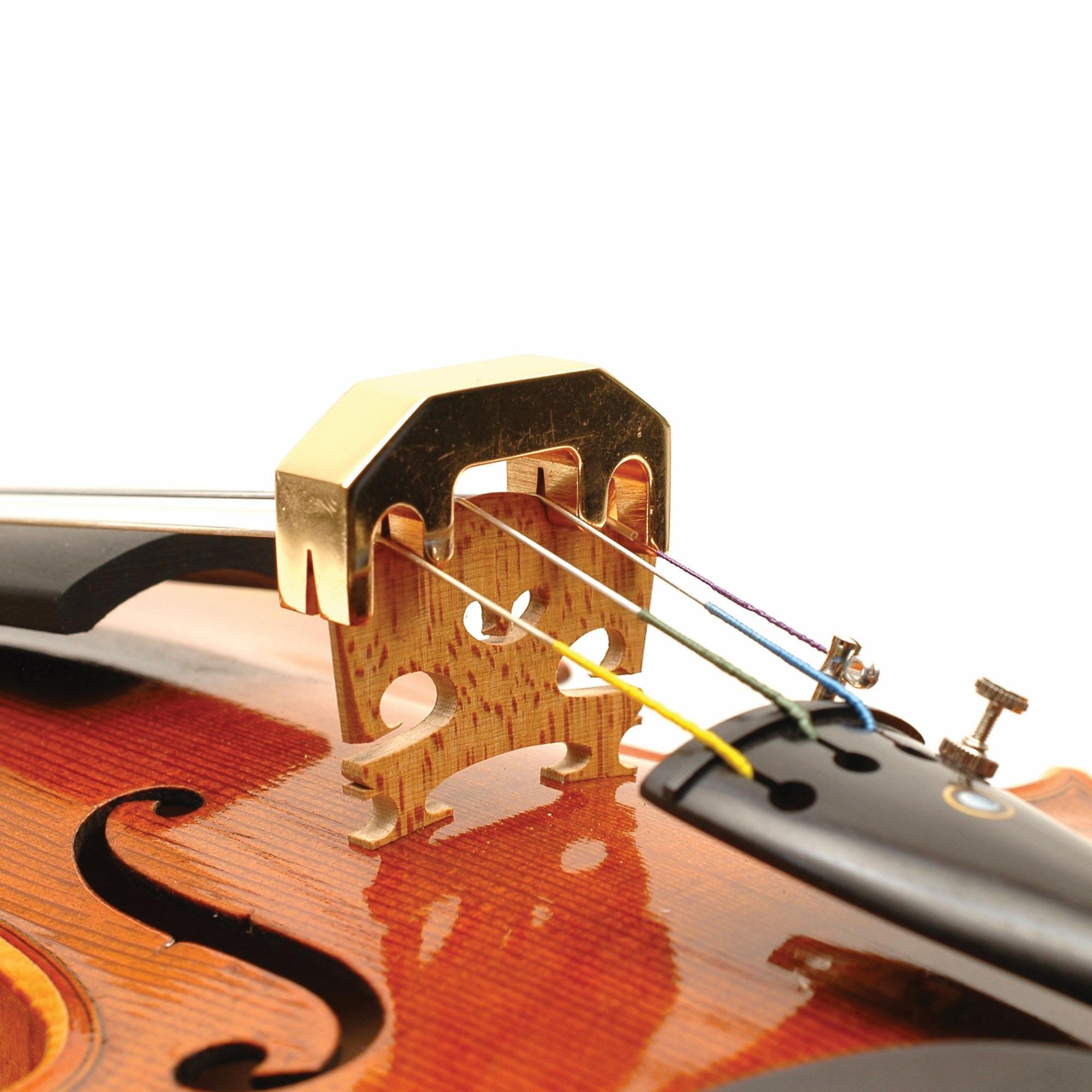
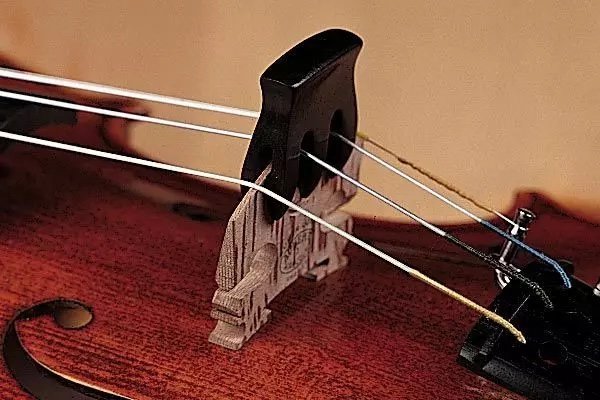
Frequently asked questions
-
The essential accessories needed to start playing the violin are violin, bow, rosin, shoulder rest, music stand, and a chin rest.
-
A chin rest is an essential accessory for the violin as it helps the player to hold the instrument in place without causing strain to the neck or shoulders. It is highly recommended for beginners to use a chin rest.
-
A shoulder rest is a useful accessory that attaches to the back of the violin, providing support and comfort for the player. Whether or not a player needs a shoulder rest is a matter of personal preference. Some players may find it more comfortable to use a shoulder rest, while others may not need one at all.
-
Rosin is a sticky substance that is applied to the bow hair to create friction between the bow and the strings. This friction helps to produce sound when the bow is drawn across the strings. Without rosin, the bow would slide across the strings, producing no sound at all.
-
A music stand is an important accessory for anyone learning to play the violin. It provides a stable surface on which to place sheet music, allowing the player to focus on their playing without having to hold the music in their hands.
-
Choosing the right violin and bow is a matter of personal preference. It is important to try out several violins and bows before making a decision. Factors such as the weight, balance, and feel of the instrument and bow are important to consider.
-
A mute is a small accessory that attaches to the bridge of the violin, helping to dampen the sound of the instrument. Mutes are commonly used by violinists when practicing in areas where the sound of the violin may be a disturbance to others.
-
While it is possible to learn how to play the violin on your own, taking lessons from a qualified instructor can be extremely helpful. A professional instructor can provide guidance on proper technique, posture, and help develop a solid foundation for your playing.
-
The best way to keep your violin in good condition is to store it properly in a case when not in use, avoid exposing it to extreme temperatures or humidity, and regularly clean and maintain the instrument and bow.
-
Yes, there are several additional essential accessories needed such as a tuner, spare strings, fine tuners, and a metronome. These accessories are important to ensure that your violin is well-maintained and produces the best possible sound.
Read more articles
Quick video tips
““The average life of violin strings is between 6 months and 1 year. It’s always a good idea to have a spare set of strings on hand in case one breaks.” ”

